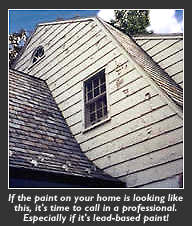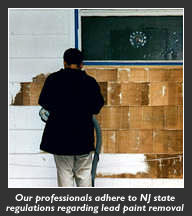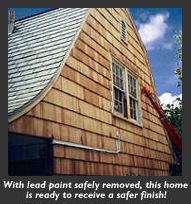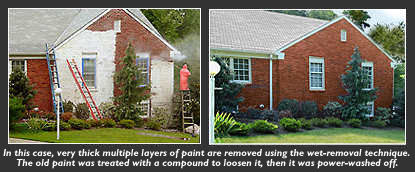
 |
 |
 |
| There’s little need to state that lead-based paints are bad news. Lead paint chips, dust, and flakes are especially hazardous to developing children. For the health and safety of all, it’s best that these finishes be removed, and be removed in a manner which does not spread the lead contamination beyond where it already exists. PCRS's employees are professionally trained, and abide by New Jersey State regulations and requirements when removing older paint finishes which contain lead. In compliance with state regulations, state-of-the-art HEPA-vacuum sanding equipment is used when sanding wood-sided residential dwellings and commercial buildings to keep dust down to an absolute minimum. This practice ensures the safety of both our customers and employees. When multi-layered lead or non-lead based paints must be removed from non-sandable surfaces such as brick, cement, stone, stucco, or Dry-vit, a wet removal process is used. The professionals from PCRS will apply a special compound to the facade, which is then carefully wrapped with a poly sheet. This compound begins working immediately at loosening the old finish. After 24 hours, the old paint finishes are power washed away with no resulting sanding dust. The removed residue and paint chips are collected on a tarp system as they are washed off and are then safely disposed of. If you suspect that you have lead-based paints on the exterior of your home or building, give PCRS a call. We will determine what kind of finish you have and recommend the appropriate steps for removal. |
 |

NAT-223643-1